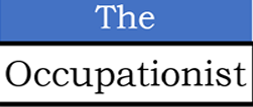Every occupation has the potential to cause injuries and illnesses in workers. It is immaterial if the worker is from the top management or otherwise; is white-collared or otherwise.
In a high-profile industry, depending on the job, the robot is both the new blue-collar as well as the white-collar worker!
With introduction of technology, many erstwhile blue-collar workers in high-profile industries are now white-collared, except in fishing, construction, and agriculture where we still find blue collar workers, especially in developing countries, including India.
In a high-profile industry, depending on the job, the robot is both the new blue-collar as well as the white-collar worker!
Most call-centres employ thousands of workers – the initial impression is that these workers are well taken care of; as they are picked up and dropped at their homes, are given free meals and a reasonable compensation. The workplace also looks good and clean. But behind this glamour are a lot of unseen hazards that are capable of doing a lot of harm to physical and mental health of a worker in a call-centre worker.
Like any other occupation, the call-centre workers have their share of work-related illnesses. The sad part is that due to paucity of doctors specialized in diseases of occupations, their work-related health issues usually go unaddressed. The call-centres seldom employ or consult Occupational Health (OH) physicians who are experts in diseases of occupations.
Banking and finance, insurance, travel services, telecommunications, road services, utilities, and sales are some of the common industries that depend on their businesses on call centres. The main function of a call centre is to provide customer service through telephone or computer.
The usual tasks done by a person in a call centre include the following:
- Provide information and product support and information to clients/customers by landline phone using a headset
- Answer or dial telephone and/or electronic requests and resolve customer complaints
- Manage aggressive behavior or other issues of a dissatisfied customer
The health hazards for a call centre employee are:
Biological:
- Infections may spread if workstations (desks) are close to each other.
- Infections also spread when desks and equipment are shared without cleaning between uses.
Physical:
- Air quality in the room or hall could be poor leading to fatigue.
- Noise exposure due to fellow worker talking or an acoustic incident through the headset (e.g., crackles, whistles, hisses or high-pitched sounds, feedback, or phone receivers being accidently dropped).
- Inadequate regulation of room temperature can lead to heat and cold stress.
Chemical:
- Like any other office-based employee, call centre employees may be exposed to cleaning products, photocopier toner, and other products.
Ergonomic:
- Musculo-skeletal disorders due to sitting for long hours.
- Continuous typing or doing the same work leads to RSIs (Repetitive Strain Injury).
- Inadequate lighting (e.g., glare, low level lighting, etc.) may cause workers adopting awkward postures leading to aches and pains. Glare can also lead to headache or trigger a pre-existing migraine.
- Small workplaces also cause workers to adopt awkward postures leading to aches and pains. It can also lead to claustrophobic feeling.
Psychosocial:
- Threats of violence, harassment, verbal or sexual abuse by the online customer.
- Lone working: sometimes there are few workers in the call centre, and all busy. This can lead to a sense of loneliness.
- Workplace stress due to performance targets, monetary incentives for increased output, quotas, targets, or demands from the customers.
- Shift work can lead to certain health issues in the long run. The workers should follow advices on how they can be reduced.
Others:
- Voice fatigue due to extensive talking (total or intermittent loss of voice, changes in pitch and decrease in voice volume, constant throat clearing, drying in the throat and excessive mucous, the sensation of a lump or pain in the throat, increased effort to talk).
- Difficulty in swallowing due to prolonged talking.
- Shortness of breath may be a result of talking without resting the voice.
- Overeating (as food is usually provided free) and excessive hours of continuous sitting (part of their job) places them at a higher risk of lifestyle diseases, namely, diabetes, hypertension, weight gain etc.
The hazards in call-centres are more or less the same. Having identified the hazards, its mitigation is of paramount importance to lower the harm to a call-centre employee health to as low as reasonably practicable (ALARP). This is an area where expertise of an Occupational Health physician helps along with HR and Admin.
Discussing each and every hazard and its mitigation is out of the scope of this article.
To know more, contact ____________________________________________________________________________________________
Dr Ajay Sati is an Occupational Health physician who prefers to describe himself as an Occupationist, to denote, ‘an expert in diseases and other concerns of occupations.’ Dr Sati has managed health and wellness programs in industries he worked, like the atomic energy, and energy (oil & gas) in India and overseas. An experienced virtual consultation expert he was involved in many greenfield and brownfield projects providing inputs from health point of view.



